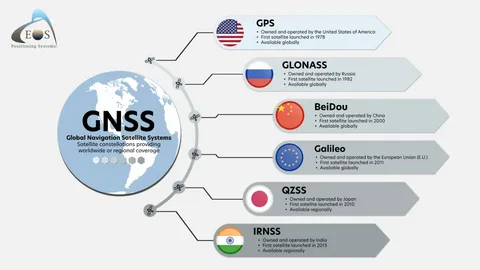Global Navigation Satellite Systems (GNSS) have become an essential part of modern technology, playing a pivotal role in navigation, communication, and precise timekeeping. Among their many applications, GNSS system are increasingly critical for time synchronization, which underpins a wide range of industries, from telecommunications to finance and power grids.
Understanding GNSS Systems
GNSS systems refer to satellite-based technologies that provide geolocation and time information to receivers on Earth. The most widely known system is the Global Positioning System (GPS) operated by the United States, but other examples include Russia’s GLONASS, Europe’s Galileo, and China’s BeiDou. These systems rely on a network of satellites that continuously transmit signals containing precise time and orbital data.
The primary strength of GNSS systems lies in their ability to provide highly accurate timing information, often with nanosecond-level precision. This accuracy is crucial for applications where even slight time discrepancies can cause significant issues.
The Importance of Time Synchronization
Time synchronization ensures that different systems or devices operate on a common temporal framework. This is vital for several reasons:
- Telecommunications: Synchronization allows networks to efficiently manage data traffic and prevent signal collisions. Mobile networks, for instance, rely on accurate timing for handovers and maintaining call quality.
- Finance: Stock exchanges and banking systems require precise timestamps for transactions to prevent disputes and ensure regulatory compliance.
- Power Grids: Synchronizing the operation of generators and monitoring energy flows prevents blackouts and ensures efficient energy distribution.
Without accurate time synchronization, these critical infrastructures could face operational failures or security risks.
How GNSS Systems Enable Time Synchronization
GNSS systems achieve time synchronization through the use of atomic clocks onboard satellites. Each satellite continuously broadcasts the current time, which a GNSS receiver on Earth can compare against its own internal clock. By calculating the time it takes for the signals to travel from multiple satellites to the receiver, the system can determine both the exact position and the precise time.
This process allows devices connected to GNSS systems to maintain consistent and accurate timekeeping without relying on manual calibration or less reliable local clocks. As a result, industries can operate more efficiently and securely.
Challenges and Considerations
While GNSS systems provide highly accurate time synchronization, they are not without challenges. Signal interference, atmospheric conditions, and deliberate jamming can disrupt the timing information. To mitigate these risks, many organizations implement hybrid systems that combine GNSS-based timing with terrestrial backup solutions, ensuring uninterrupted synchronization.
Conclusion
In today’s interconnected world, GNSS systems and their role in time synchronization are more important than ever. From telecommunications to finance and energy, precise timing underpins the efficiency, reliability, and security of essential services. By leveraging GNSS systems, industries can achieve accurate, real-time synchronization, supporting the complex infrastructure of modern society.


